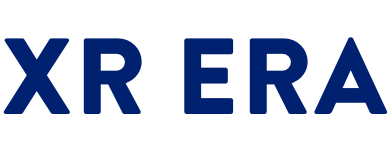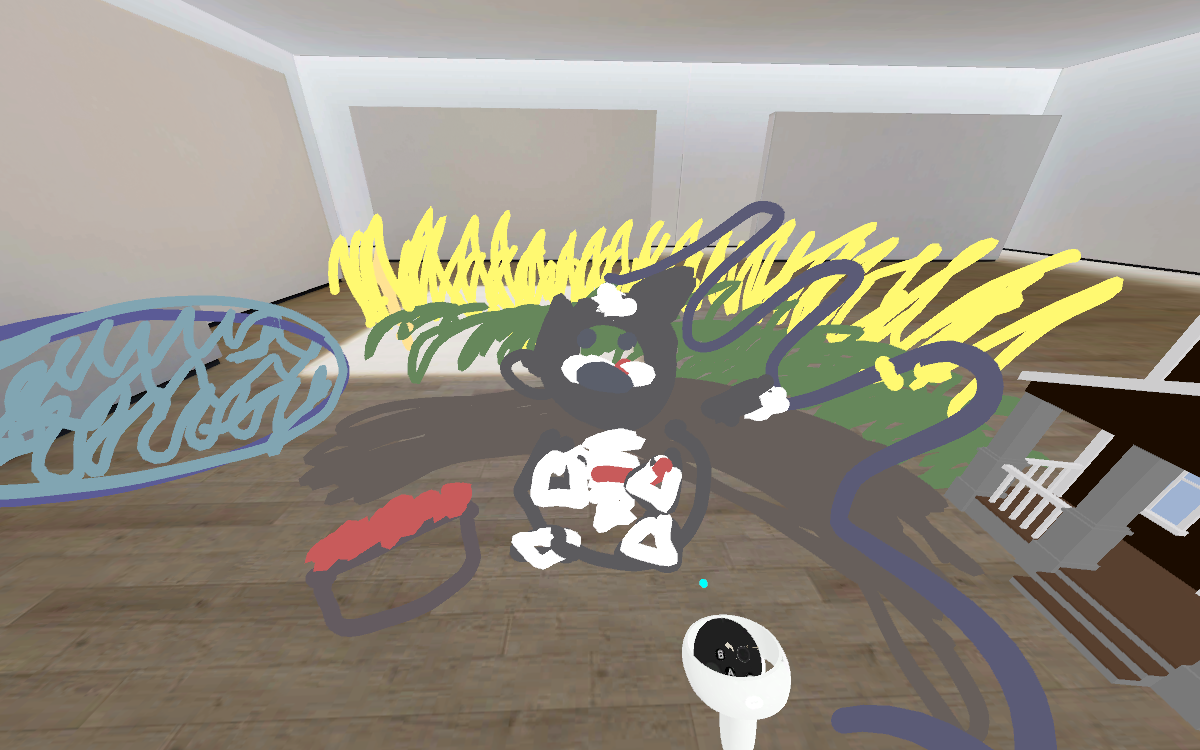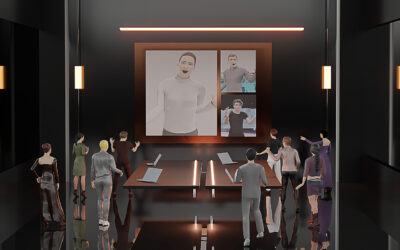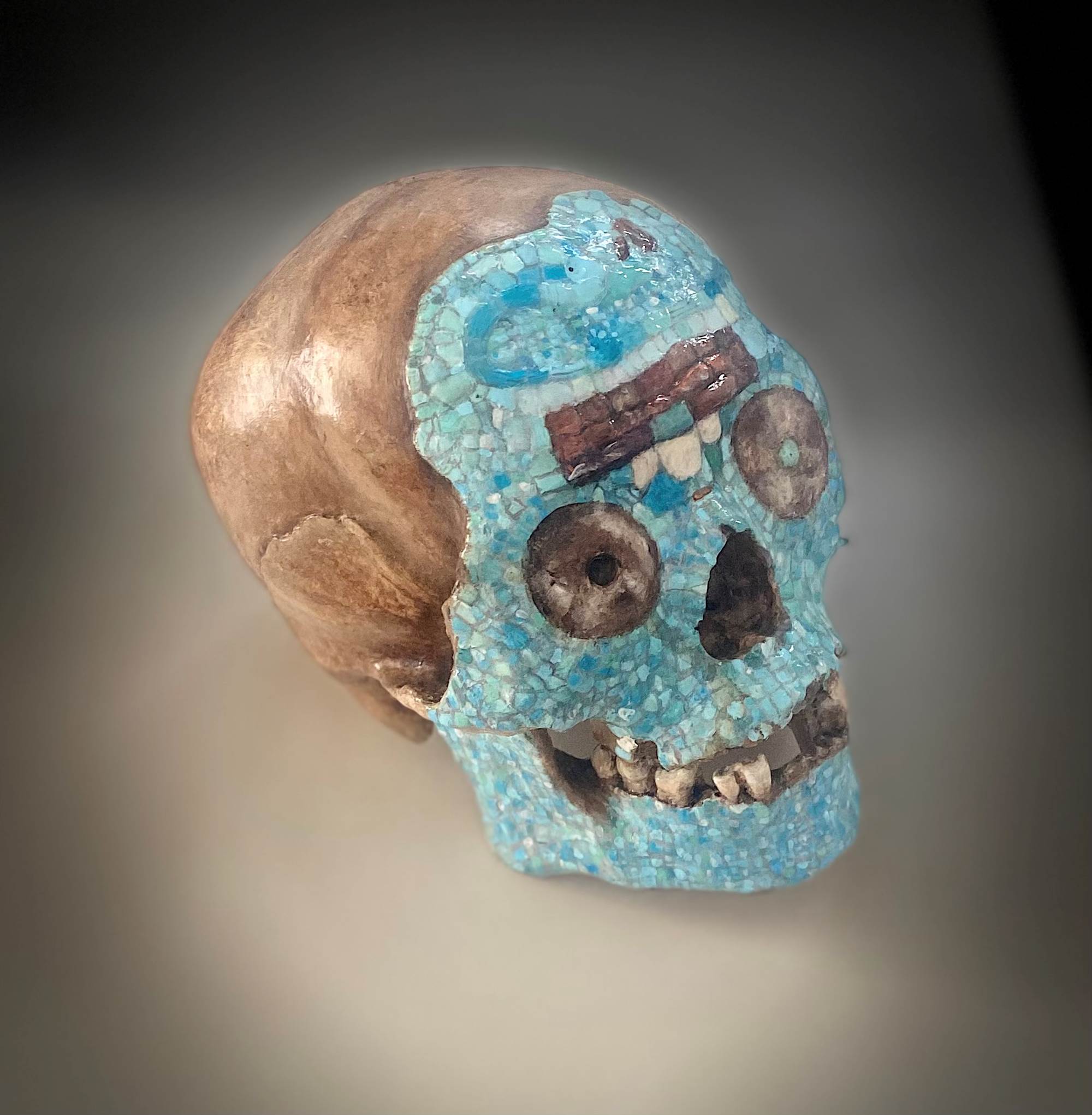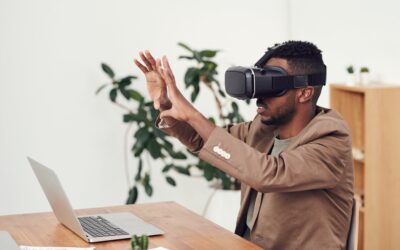On the 6th of June, we were thrilled to welcome Nina Salomons, the Co-founder and CEO of the XR visualisation tool, Anomie. Intended for use within therapy, the platform aims to create safe spaces for personal expression within the virtual realm. As Nina explores in her presentation, there are numerous reasons for which verbal expression can sometimes only take us so far. For her, in this respect, VR as a medium is key.
ABOUT OUR SPEAKER
As both its Co-founder and CEO, Nina has been involved with Anomie since its foundation in 2020. Beyond this, her experience within the XR field is wide-ranging, seeing her lead the XR Diversity Initiative and found London’s ‘Women in VR’ meetup group, amongst much else.

THE ROADS WHICH LED TO ANOMIE
As Nina explains, despite now thriving within the field of VR, this technology hasn’t always been the focus of her career. While judging at a film festival, her challenging circumstances in her early years caused her to be profoundly impacted by a film titled “Being Me”, shot from the perspective of a child. As a consequence, Nina not only became fascinated by the question “why do I do what I do?”, but began training foster parents how to look after foster children using VR.
Having encouraged foster parents to don a headset and experience from a child’s perspective how it feels to be neglected, yelled at, and ignored, she was moved by what she refers to as the ‘incredible’ extent of the results. Thereafter, she continued to work in VR, yet altered her audience to include those incarcerated within British prisons as well as those impacted by the tragic 2017 fire in London’s Grenfell Tower.
From both projects, a great deal was learned. From that in UK prisons, Nina confirmed VR’s capacity to encourage participation in activities where other methods had previously failed. From that aspiring to help those who had lost loved ones in Grenfell’s fire, Nina observed the technology’s capacity to encourage the non-verbal expression of emotion through art.
VIRTUAL HAPPY PLACES
This catalogue of work then brought Nina to her project of creating ‘virtual happy places’ – one which sought to demonstrate the internet’s potential as a platform for good. With this ambition in mind, both a young girl and older man were asked to describe what they considered to be their ultimate happy place, unrestrained by the confines of reality. These spaces were then created within VR and occupied by those who had initially envisioned them, much to their astonishment. Neither the little girl confronted by her pink world and unicorn, nor the old man with his hammock, koi pond, or ballet shoes, wished to leave.
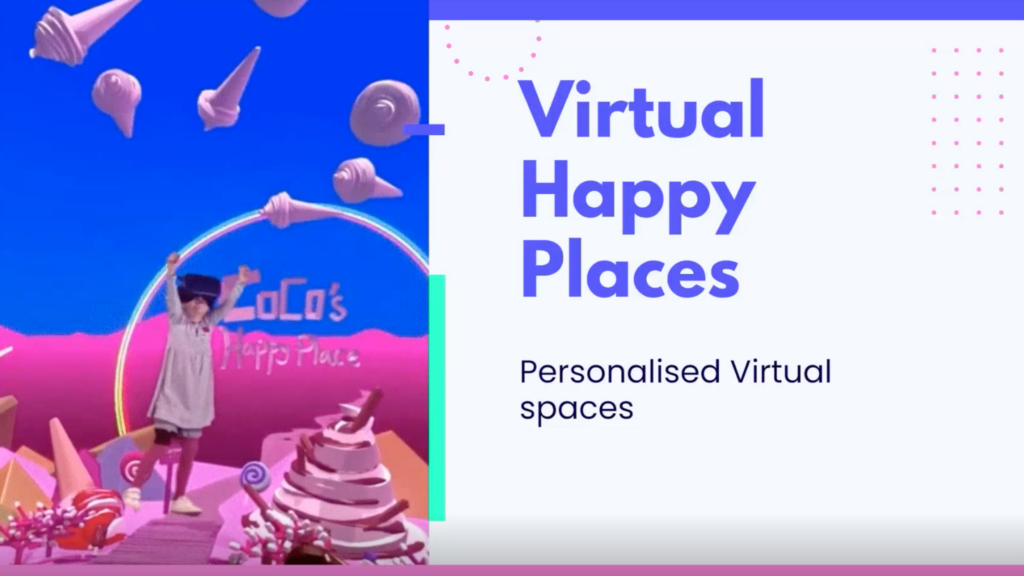
WHAT CAN THERAPY LOOK LIKE IN VR?
For everyone, the period of the Covid pandemic was one characterised by challenges. In this, Nina was no exception. In addition to having to step back from many projects owing to an inability to be on location, she contracted long covid, preventing her from walking and leaving her without the ability to form sentences. After recovering to some extent, Nina wished, once again, to resume her personal therapy sessions, yet did not feel able to do so if all communication were to remain entirely verbal. As a result, she asked her therapist if she would meet her in VR. Here, she would be able to draw.
At this moment in her presentation, Nina provides us with a highly personal glimpse into one of her own therapy sessions, recorded during her time with long covid. Transported into a virtual white room with wooden flooring and blank walls, Nina is joined by her therapist who can see and communicate but cannot herself be seen. In this video, together, they confront an anxiety-inducing situation in which Nina found herself, as in her childhood, in a school in which she does not speak the language and, as a result, was having a challenging time with both the teachers and other children.
In the session, Nina repeatedly draws how she envisions the scenario in her mind yet, each time she does so, she scribbles over it until the image can no longer be seen. After erasing, she expresses how she feels, noting that, generally speaking, the negative sensations became lesser upon each repetition.
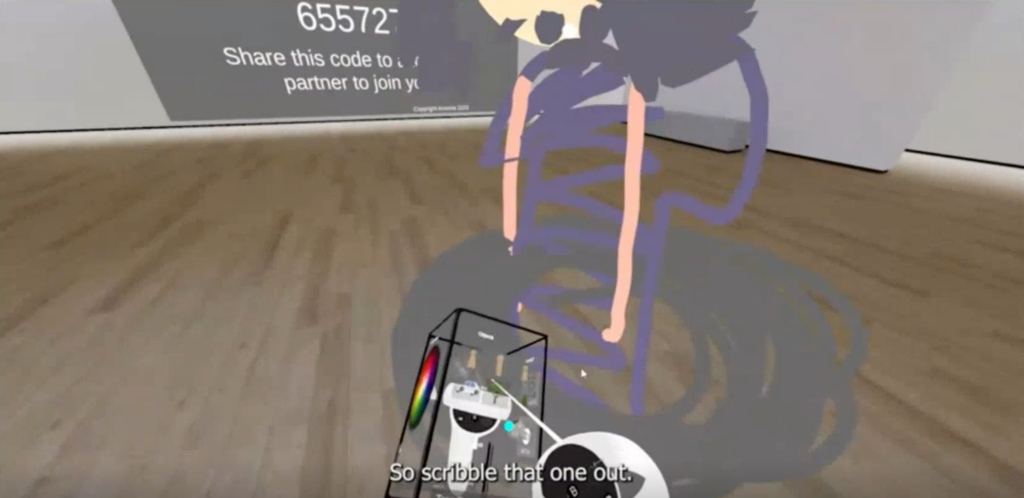
ANOMIE XR – WHAT IS IT & WHY?
For Nina, the principal problems which Anomie aims to tackle are clear:
- Long waiting lists for those seeking therapy
- The amount of time which therapists spend performing administrative tasks
- The stigma and prejudice which many feel in relation to seeking therapy
At present, Anomie is a live intervention tool used exclusively in real-time facilitation. With time, however, it is Nina’s ambition that therapists and coaches will also be able to create their own exercises able to be used as homework, for example. Anomie’s team would have to grant these ethical clearance prior to their use.
SHARING CLIENT FEEDBACK
The numbers on the slide below are taken from a pilot with United Way The Netherlands and Ukrainian refugees and indicate the clients’ overall positive belief in Anomie’s beneficial potential.
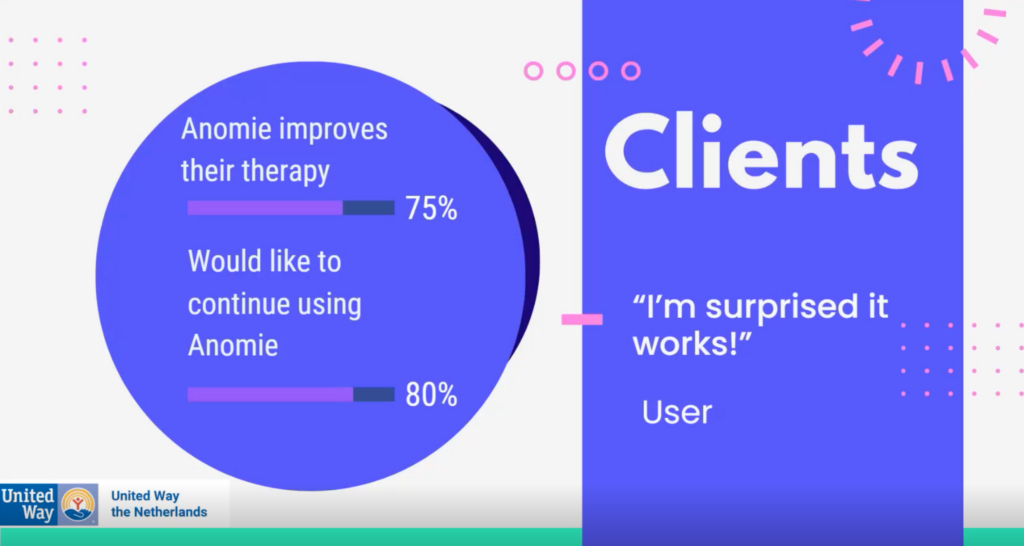
It is, however, interesting to note that, although the vast majority of clients were impressed with Anomie, the number of councillors comfortable with the app’s use remained lower. With this in mind, Nina elaborates upon certain hurdles, noting the challenge of (remotely) educating councillors previously unfamiliar with VR, as well as the impact had by their lack of confidence when it comes to the technology’s practical use. Aware of these obstacles, over time, Nina and the Anomie team are seeking ways of better overcoming them.
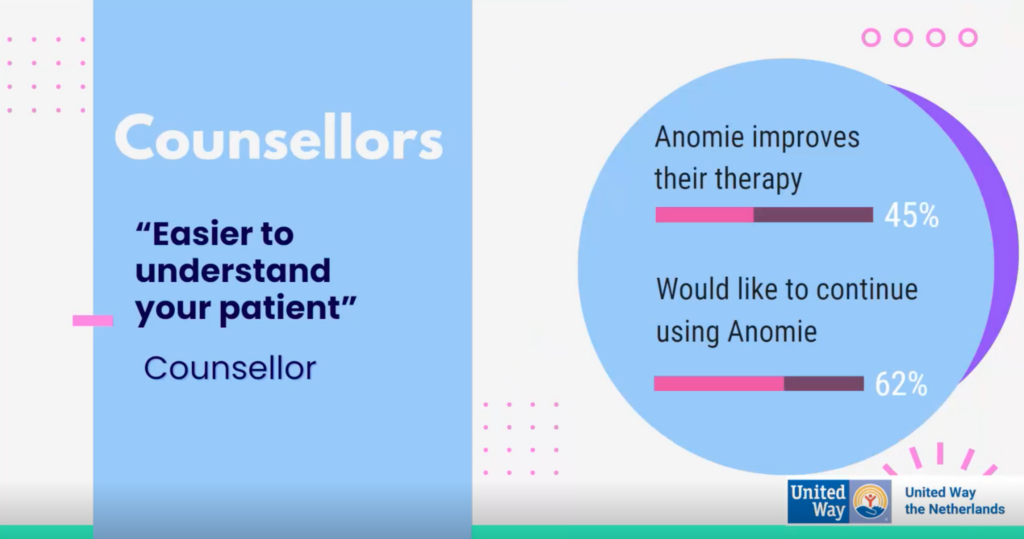
ANOMIE & ETHICS
The image below outlines three individuals, each of whom might be considered amongst Anomie’s target audience. These include:
- Young boys who struggle with anxiety and trauma
- Autistic children who can easily become overwhelmed
- Men with depression who might often be reluctant to try therapy
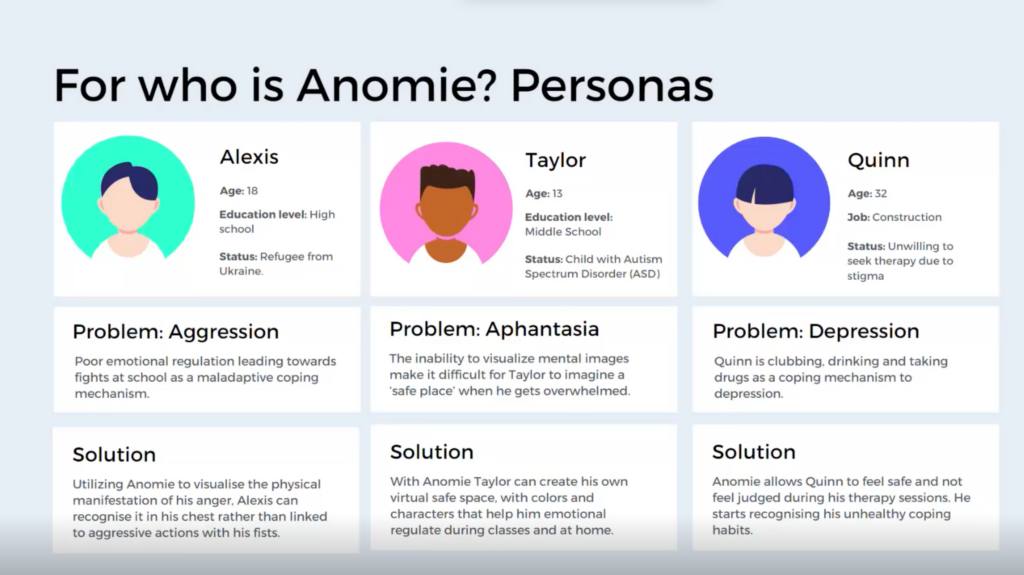
As Nina acknowledges, there is much concerning Anomie which plays into XR’s ethical debates and it is fundamental that certain questions are confronted.
Concerning consent, for example, Nina emphasises that Anomie’s approach of handing agency to the end user is unusual. Although it is the client who decides what verbal and drawn content to share with their therapist, complications arise owing to the nature of the virtual environment and the fact that clients may not always be aware of the extent of the information and data they are, in reality, sharing. To combat this, before any session takes place, Nina makes clear that clients must be informed of precisely what they can choose to share, how, and why.
Concerning safeguarding, Nina clarifies that it is essential for councillors and therapists to be well-informed regarding issues such as motion sickness before any session takes place. Moreover, everyone needs to be fully aware regarding how one can move safely while the headset is on.
Finally, Nina addresses the question of avatars, noting what she perceives to be a vast difference between metaverse and VR therapy. As she explains, in Anomie, the client does have an avatar yet – in contrast to in the metaverse – they neither see them and they nor interact with the avatar of anyone else. Although the therapist or councillor is very much present with them in the digital environment, their presence comes only in the form of their voice.
When users enter Anomie’s VR space, they are immersed within an empty white room. Here, they can be prompted with questions, in response to which drawings can be created as a means of expression. After this virtual section of the session, they can return to a non-VR format of therapy to discuss how they found the virtual experience. Indeed, it is significant to note that Anomie has a built-in additional safe room, enabling therapists to transport their clients if they begin to feel excessively overwhelmed or upset.
OBSTACLES
As Nina explains, although there are many potential benefits of Anomie, there remain also several challenges yet to fully overcome, including access to hardware, strong and reliable wifi connection, the costs of clinical trials, and the fact that Anomie does not necessarily fit into a straightforward category. Although a visualisation tool rather than one which performs assessment, following discussions with ethics committees, there has been debate as to whether Anomie could be considered a medical grade software device.
In any case, Anomie continues to evolve and progress and Nina would love to hear from you if you are interested in collaborating and involved in the areas detailed on her side below! Moreover, as she enthusiastically informs us, the app is currently available for free download. If anyone would like to download it and have a go for themselves please feel welcome both to do so and to get in touch with Nina personally if you have any further questions or would like to test it out with her!
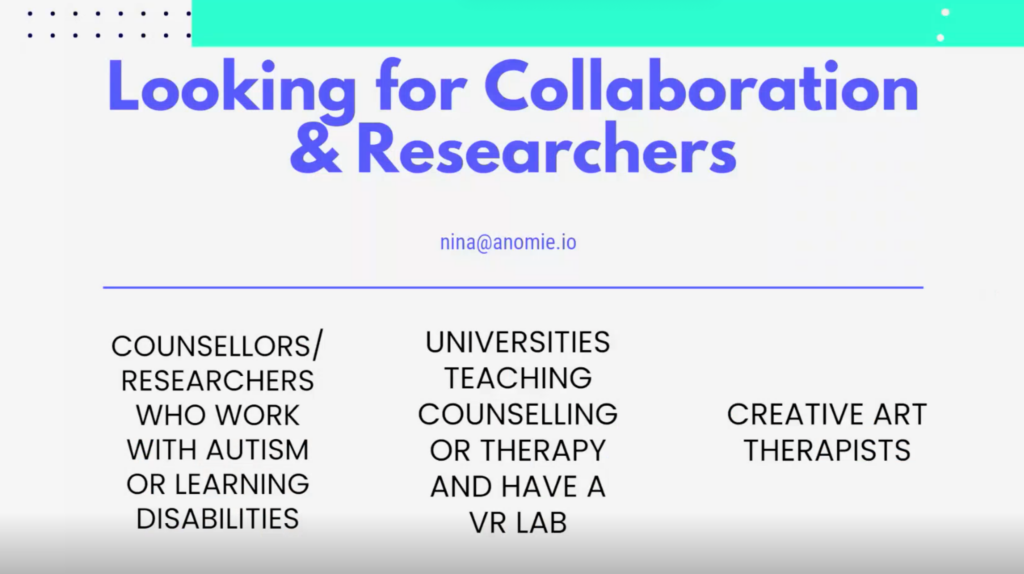
Thank you very much to Nina for such an enthusiastic and engaging presentation regarding this innovative means of using VR – we’re looking forward to following along on your journey and seeing where Anomie goes in the future!

